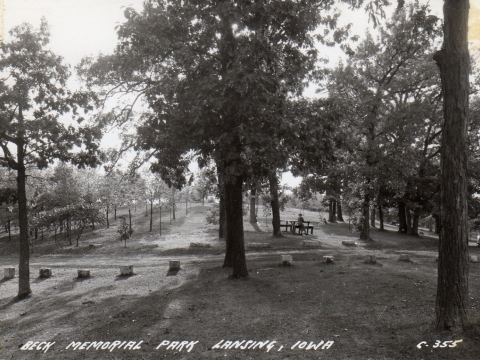Post 50 Lansing, Iowa
Post 50
Lansing, Iowa
HISTORY
1910
Founders of Lansing Post 50
Fifteen men who returned to Lansing, Iowa, after WWI petitioned to establish Lansing Post 50 of the newly created American Legion. A temporary charter was issued to the Lansing group on June 6, 1919.
WILLIAM EBEN ALBERT JR. was born in 1899 in Pepin, Wisconsin. He served in the Student..
1920
Beautiful blufftop veterans memorial created
Lansing chose to honor her military veterans in the unique setting of a bluff-top park overlooking a sweeping turn in the Mississippi River and the town itself. According to the Iowa Legionnaire on July 3, 1922: “Some places show their appreciation of the valor of the boys by building memorial halls, arches or community club houses..
1940
Gaunitz becomes Iowa commander
In March 1942 Harold W. Gaunitz, shown here* with his wife Ethel, took on the duties of commander of the Iowa department of the American Legion, filling out the term of Thomas H. Tracey of Manchester, who had re-entered the army. No one had served Lansing’s Post No. 50 of the American Legion longer or more devotedly than Gaunitz. He..
1950
The Five Peters Brothers, Every One a Marine
In what must be a rare occurrence among Iowa families,five brothers in the Peters family of Lansing, Iowa, served in the U.S. military for a combined total of seven decades. Three became career military men and four became members of the American Legion. One survives and is still a driving force behind the activities of Lansing’s Post 50.






